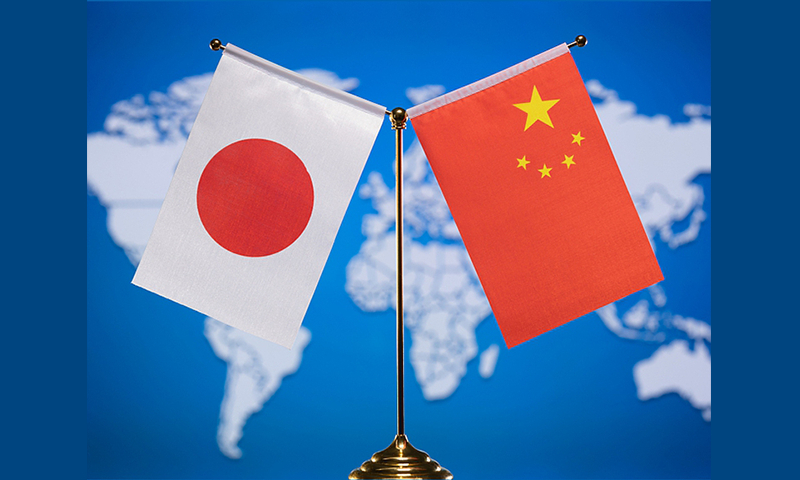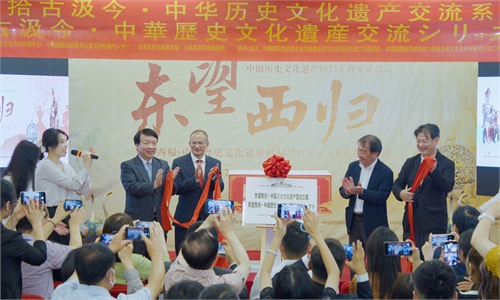Art, crested ibis conservation, China-Japan cultural events in Osaka promote exchanges

China Japan
Taking inspiration from the mutual learning spirit of the Orchid Awards, the opening ceremony of a series of China-Japan cultural events was recently held at the Chinese Consulate-General in Osaka, Japan. These events, including a calligraphy show, demonstrate the endeavor of "the two countries seeking a consensus in culture," Wu Puxin, an international relations expert, told the Global Times.
A highlight of these events was an exhibition featuring the essence of "blooming civilization." The show includes three parts: exhibiting Chinese cliff inscriptions, China and Japan's collaboration on saving the crested ibis, and sample scripts of traditional Chinese arts.
The 13 Shimen Inscriptions, also known as the 13 Cliff Inscriptions of the Stone Gate, debuted at the Japan show in a creative form of Miao batik, a textile art passed down by the Miao ethnic group for more than 2,000 years.
The craft's cliff inscriptions date back to the Han (206BC-AD220) and Wei (220-265) dynasties. They were originally located in Northwest China's Shaanxi Province. These inscriptions cover a variety of subjects, including religious texts, historical records, and commemorative messages.
Historian Fang Gang told the Global Times that this treasure has long been considered a "notable example of early Chinese calligraphy." It also has strong cultural ties to countries like Japan, which has a "deeply rooted calligraphic tradition and borrowed written characters from Chinese."
"The inscription legacy represents not only calligraphic art but also the Eastern Asian philosophical aesthetics that are still shared among Chinese and Japanese cultures today," Fang emphasized.
At the opening ceremony, Fang Wei, Chinese deputy consul general in Osaka, said that "promoting the shared values of China and Japan" is a major aspect contributing to improving the two countries' bilateral relations.
Fang also emphasized the importance of "respecting the diversity of world civilization, exploring China-Japan cultural resources, and expanding mutual cultural exchanges" as means to bring Japan and China closer together.
The exhibition's section dedicated to the precious crested ibis is significant, as 2024 marks the 25th anniversary of China gifting two crested ibises, "You You" and "Yang Yang," to Japan.
The bird species, once listed as "endangered" on the IUCN Red List, has been saved through the collaboration between China and Japan. Over the past 25 years, China has helped Japan rebuild the crested ibis population, which has now surged to more than 700. This conservation narrative symbolizes the friendship between the two countries and serves as an exemplar of biodiversity protection.
In addition to the exhibition, a salon talk featuring Japanese sinologists and art museum directors was also launched.
The 2024 China-Japan cultural event was organized by the Orchid Awards Secretariat of China International Communications Group (CICG) and the Chinese Consulate-General in Osaka, Japan.
First founded in 2022, the Orchid Awards were established to recognize foreigners and organizations worldwide who are committed to China's cross-cultural exchanges and have made outstanding contributions to the promotion of mutual learning.



